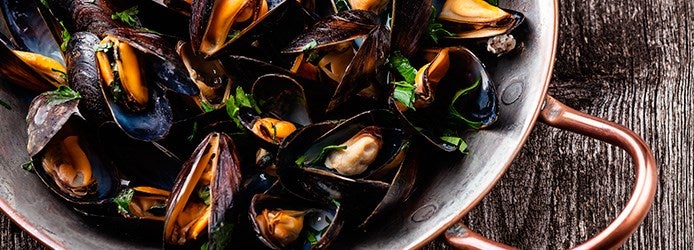Eighth Century. The first mussel farm apparently dates back as far as the late VIII century and was located in France.
Frites. Moules et Frites, mussels and chips are the national dish of Belgium, even though it has now spread throughout France. The mussels may be cooked in various different ways: “marinière”, with cream, without any particular seasoning, with a lemon and mustard sauce, with beer or garlic.
Gill. Mussels filter a huge amount of water through their gills, while retaining the particles and micro organisms contained in it. Therefore, they easily become a receptacle of dangerous bacteria and/or viruses, according to where they live and grow.
Hepatitis. It's probably the most famous disease that may be contracted from mussels, reminding how much important is freshness and quality when buying seafood.
Impepata. Impepata di cozze is a traditional dish of Neapolitan cuisine which is now popular throughout Italy; it is characterized by the abundant quantity of black pepper – hence its name - used to season the mussels.
Japan. The Mytilus gallo provincialis is the typical variety of the Mediterranean sea – but it is also native to the Black Sea and some areas of the Eastern Atlantic coast. It has now even reached Japan.
Kcal. Just 58 kcal to 100 grams!
Luxury. Provencal mussels are similar to the Marinière recipe, with the addition of tomatoes and herbs, such as thyme and Rosemary. In the eighteenth century, the luxury version called for champagne rather than wine. A century later, truffles also found their way into this recipe.












